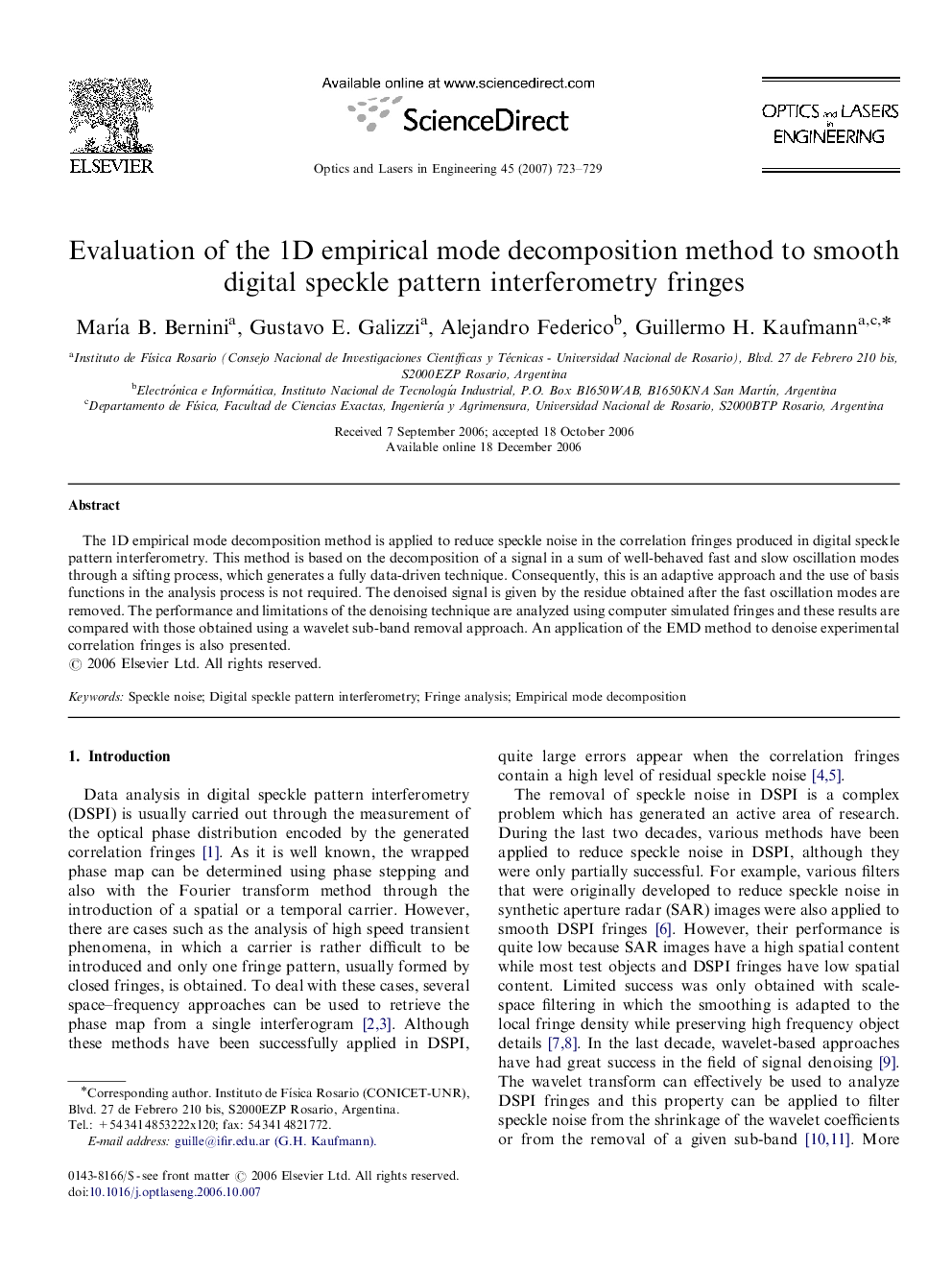| Article ID | Journal | Published Year | Pages | File Type |
|---|---|---|---|---|
| 746867 | Optics and Lasers in Engineering | 2007 | 7 Pages |
The 1D empirical mode decomposition method is applied to reduce speckle noise in the correlation fringes produced in digital speckle pattern interferometry. This method is based on the decomposition of a signal in a sum of well-behaved fast and slow oscillation modes through a sifting process, which generates a fully data-driven technique. Consequently, this is an adaptive approach and the use of basis functions in the analysis process is not required. The denoised signal is given by the residue obtained after the fast oscillation modes are removed. The performance and limitations of the denoising technique are analyzed using computer simulated fringes and these results are compared with those obtained using a wavelet sub-band removal approach. An application of the EMD method to denoise experimental correlation fringes is also presented.
